Gold Leaf Botanicals
Rhaphidophora Tetrasperma (Mini Monstera)
Rhaphidophora Tetrasperma (Mini Monstera)
Couldn't load pickup availability
The Rhaphidophora tetrasperma is a stunning plant that goes by many names. It is known as a Mini Monstera, however it has been named improperly for many years. Some of the incorrect names are Ginny Philodendron, and Philodendron Piccolo.
This article will help you with Rhaphidophora Tetrasperma care. We will provide you with great information about sun, humidity, water, soil, and propagation methods.

Rhaphidophora Tetrasperma (Mini Monstera)
Their split leaves drawn you in, and their climbing abilities will make you fall in love. Many plant lovers around the world have one in their own plant collections because of how dramatic their leaf fenestrations are, resembling the Monstera deliciosa plant.
The Rhaphidophora tetrasperma plant is native to Malaysia, Indonesia, and Southern Thailand, and is a member of the Araceae family.

Rhaphidophora Tetrasperma Care
Rhaphidophora Tetrasperma light requirements
Mini Monstera plants enjoy bright indirect lighting throughout the day. Placing your plant about 2 to 3 feet from any window will provide it with enough light to thrive. These plants, like many other plants do not like direct light to hit their leaves.
The morning sun provides softer light, which most tropical plants can handle hitting their leaves, but mid-day sun and afternoon light will be too much for your plant to handle.
Rhaphidophora Tetrasperma plants can also handle lower-light conditions. Hallways and corners will be okay, as long as the room has a window. Lower light means the plant has less energy with, growth will slow down, and watering will become less frequent.
Slow growth in a low-light area is not a bad thing. If you do not want to water your plants as frequently it can work to your advantage. Plants grow faster with more light and need more water, meaning you will have to work more often to keep them happy.

How much water does a Rhaphidophora Tetrasperma need?
On average, let the top couple inches of soil to dry out before watering again. The roots of the plant need to breathe, and they can't breathe if they are always drowning in water. By letting the soil dry, the smaller roots are exposed to air they need.
The soil coming away from the edge of the pot is an indicator that it is ready to water, and you're not too late. These plants a hardy, and can go a few days dried out, but a good soaking with warm water is needed to fully rehydrate their soil if left a little too long.

If the plant has gone too long without water you may notice the leaves look "sad", in that they are not reaching up to the light. Warm water poured over the soil will help add moisture, but you'll notice that the water may run right through. In this case, when the soil is this dry, fill a bowl with 1 inch of warm water and place your plant in it. The soil will soak up the water over 15 to 20 minutes. Take your plant out of the bowl and let it drip dry for 5 minutes before placing it back in the pot. Your Rhaphidophora Tetrasperma should look happier within a few hours.
During summer in Canada the sun is out and your plant will love the extra energy. You will have to water more frequently the more sun the plant gets, as it us using more resources. You can move your plant to a lower light spot if the watering is too frequent for your needs.
Mini Monstera Soil requirements
Mini Monstera plants like a well-draining soil mix, and most soils can be found in your local garden store. Well-draining soil helps your plant carry enough water for a week or two, and it lets your Rhaphidophora Tetrasperma grow strong roots.

Most soils come with perlite in them, which are the white specks of things you see in your soil. These are used for water retention and drainage. We tend to add a handful or two of perlite into our own custom soil mixtures, but this is just preference.
Rhaphidophora Tetrasperma Fertilizer
Fertilizing plants can be done every few months, but each plant is unique, and each fertilizer is as well. We use Liqui-Dirt and Bios products.
If you upgrade your plant to a new container and use a soil mix, it is likely that the soil also has nutrients for your plants.
Whichever fertilizer you choose, follow the instructions on the packaging. Also, during the winter, think of using less fertilizer as the sun is also shining less.
Mini Monstera Humidity requirements
A Rhaphidophora Tetrasperma plant is going to thrive in any house in Canada. Our house humidity in Canada are normally set between 30% and 40%. This is enough for any house plant, as they learn to adapt to these conditions.
Since these plants are from higher humidity levels, they do very well in bathrooms and kitchens, where humidity is increased due to steam from the water being used. If your bathroom or kitchen has a window, try placing your Rhaphidophora Tetrasperma to see how it reacts.
Moving your house plant is something you need to do gradually if the conditions are different, and we have a quick video here about that.
Rhaphidophora tetrasperma vs Monstera deliciosa
The leaves of Rhaphidophora tetrasperma are split, and they look quite similar to a Monstera Deliciosa. While both plants look similar, they are two entirely different plants. The deliciosa leaves and plant will grow much larger than the leaves of a Rhaphidophora Tetrasperma.
These two plants also have two different growing styles. The Rhaphidophora Tetrasperma will start to vine and trail, while a lot of Monstera Deliciosa plants grow up and out of the pot they are in.
Rhaphidophora Tetrasperma Propagation
Propagating a Rhaphidophora Tetrasperma (Mini Monstera) is straight-forward, and similar to other house plants. There are two methods, soil and water. We tend to use the water method, but find which works best for yourself.

Soil Propagation
When your plant has grown a few nodes longer, cut your plant an inch below the node. Use clean scissors. Take this cutting and bury the cut end in soil. Push the cutting about halfway into the soil so the plant can support itself.
Keep the soil more moist than you normally would, and do not let the soil dry out. Too much dryness could damage the new and sensitive root structure your plant is building.
After 3 to 4 weeks your plant should have put down enough roots that you can safely re-plant it into the container of your choice.
Water Propagation
Fill a small clear jar with clean filtered water. Do not use water straight from the tap, as it will have chemicals that are safe for humans, but not for baby plants.
When your plant has grown a few nodes, cut your plant an inch below the node. Use clean scissors. Take this cutting and put it into the water.
Place the jar in a window where it receives more sun. Your plant will start to put out roots, and you will see them floating in your small container. After 3 to 4 weeks your plant should have put down enough roots that you can safely plant into soil.
As you move your cutting to soil be careful not to damage the roots, and treat them with caution. Try to put the roots lower into the container so the plant can support itself vertically.

Pest Control with a Mini Monstera
Pests happen, and they aren't a bad thing.
Microbes live in your soil and on your plant. Most microbes are in the soil helping your plant grow. They are something that plant owners want to add into their plants. Your soil is healthy, happy, and thriving.
When open a window or door, even for a split second, a small little bug could enter your home. They even come in on your clothes. Most bugs will die if they don't eat something, and they will smell your plant. They are drawn to it on a hormonal level.
Bugs live in soil, and your plant has happy and healthy soil, so they will make a home. Having a pests here or there is normal, not usually what you want, but it's completely normal. It's when the bugs start reproducing too quickly that you now call it an "infestation", and action must be taken.
Don't worry! It is all part of owning a plant. We sell the best products, Koppert's pest control products. Koppert's is the same company that organic growers use to keep their pests under control for the food you eat.
As always, feel free to contact us if you need any help in this area. We love to assist and find the right products for you.
Are Mini Monstera Plants Pet Friendly?
Like many other plants in the Araceae family, it is not a pet safe plant.
Monsteras and philodendrons contain calcium oxylate crystals, which are toxic to dogs and cats. We always teach that you should keep your plants out of the reach of dogs and cats, but pets find a way. Most pets will find that the leaves cause irritation in their mouth, and will not chew the plant again, but it's always best to keep your plants in areas your pets aren't drawn to.

Conclusion
A Rhaphidophora Tetrasperma (Mini Monstera) plant is an absolutely stunning plant. Its split green leaves climbing nature will draw attention and be perfect in your office, living room, bathrooms, and bedrooms.
It is easy to care for, which is also why it makes a great plant for those new to the hobby, or who want more freedom with watering requirements,
Buy one today from our plant shop, or contact us for more information. We offer plant delivery in Ontario.
Share with friends
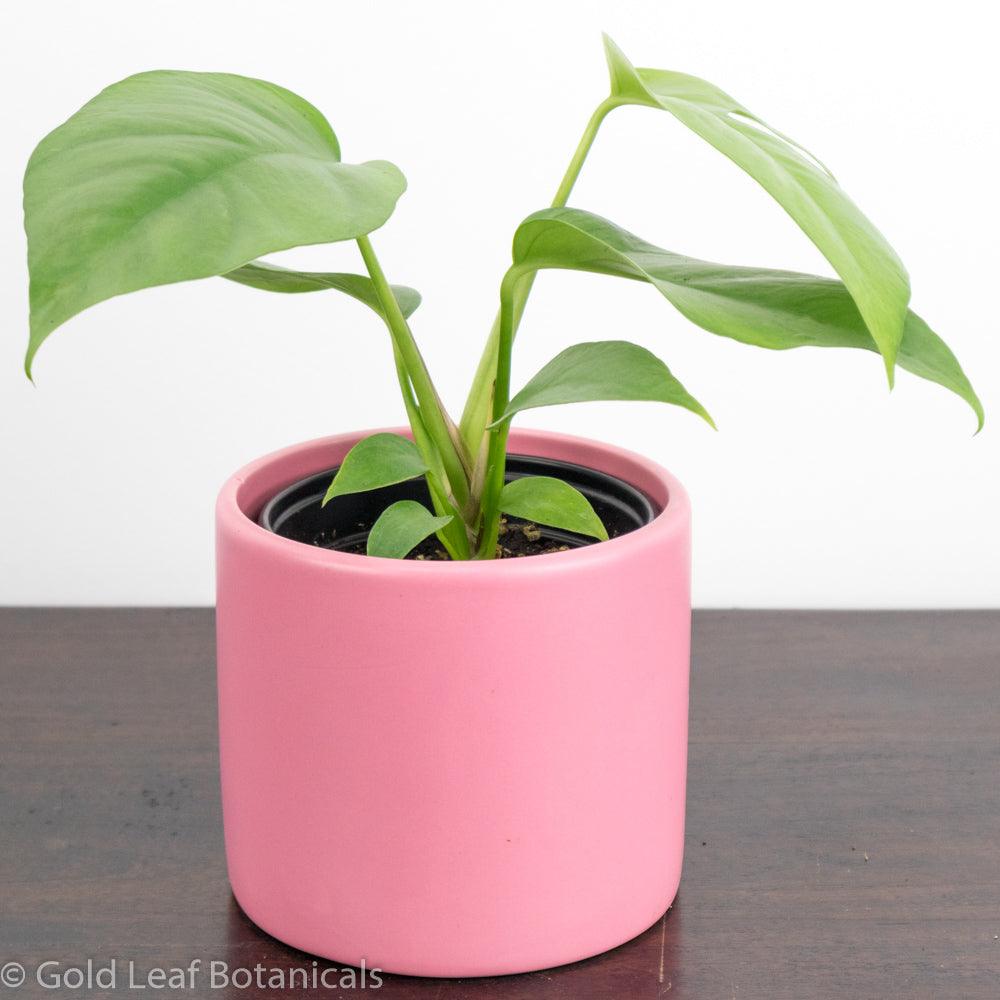
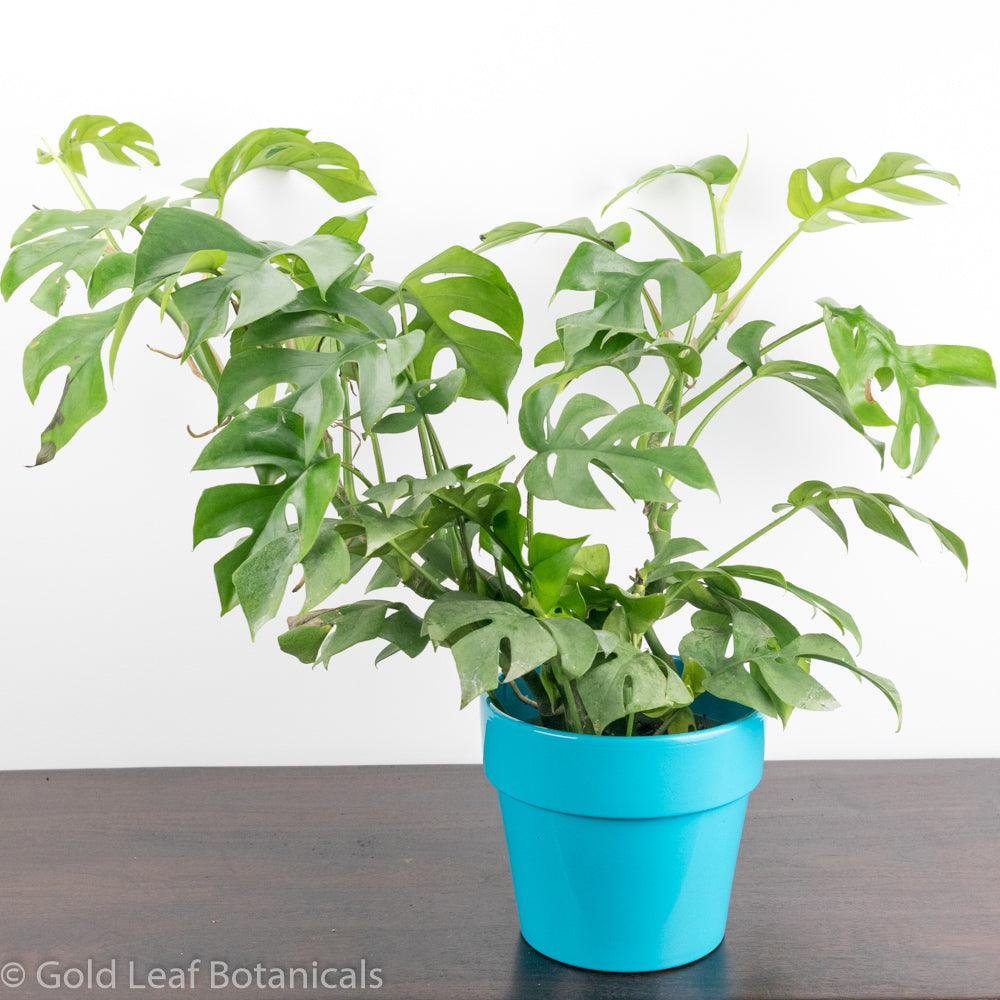
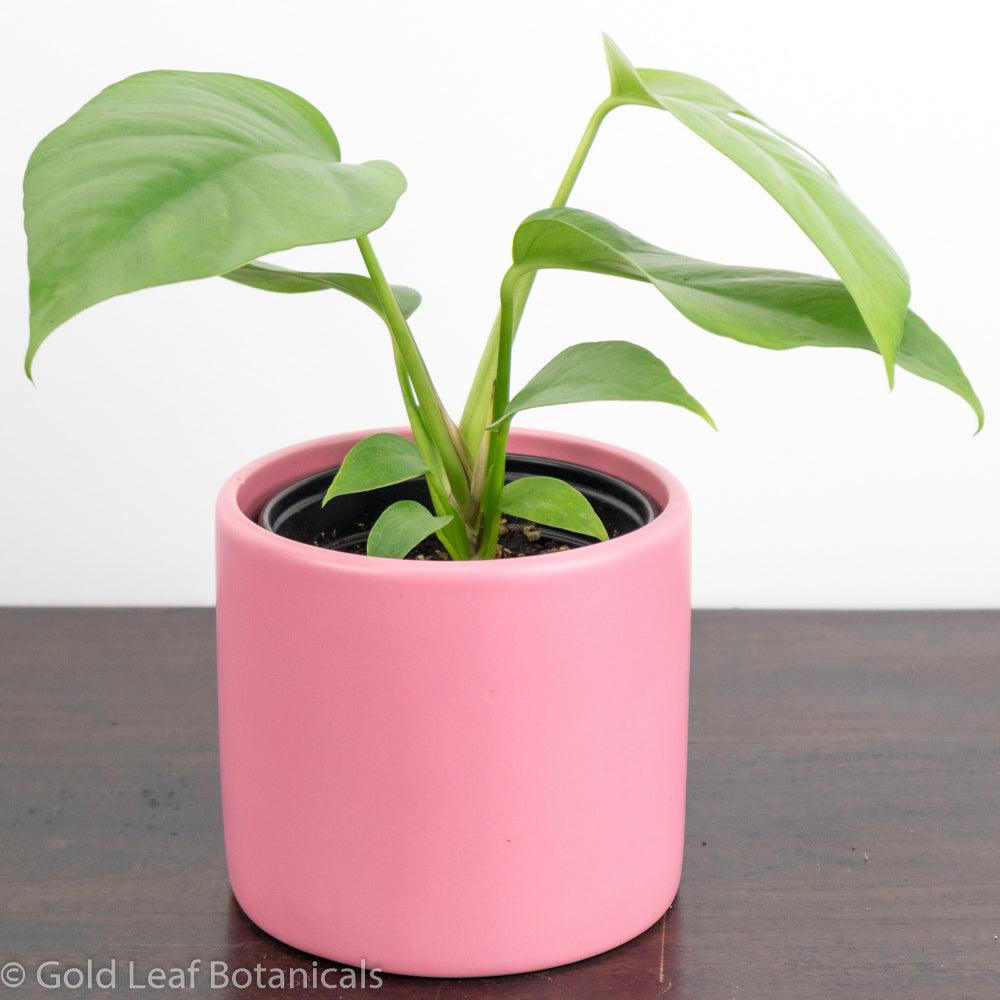
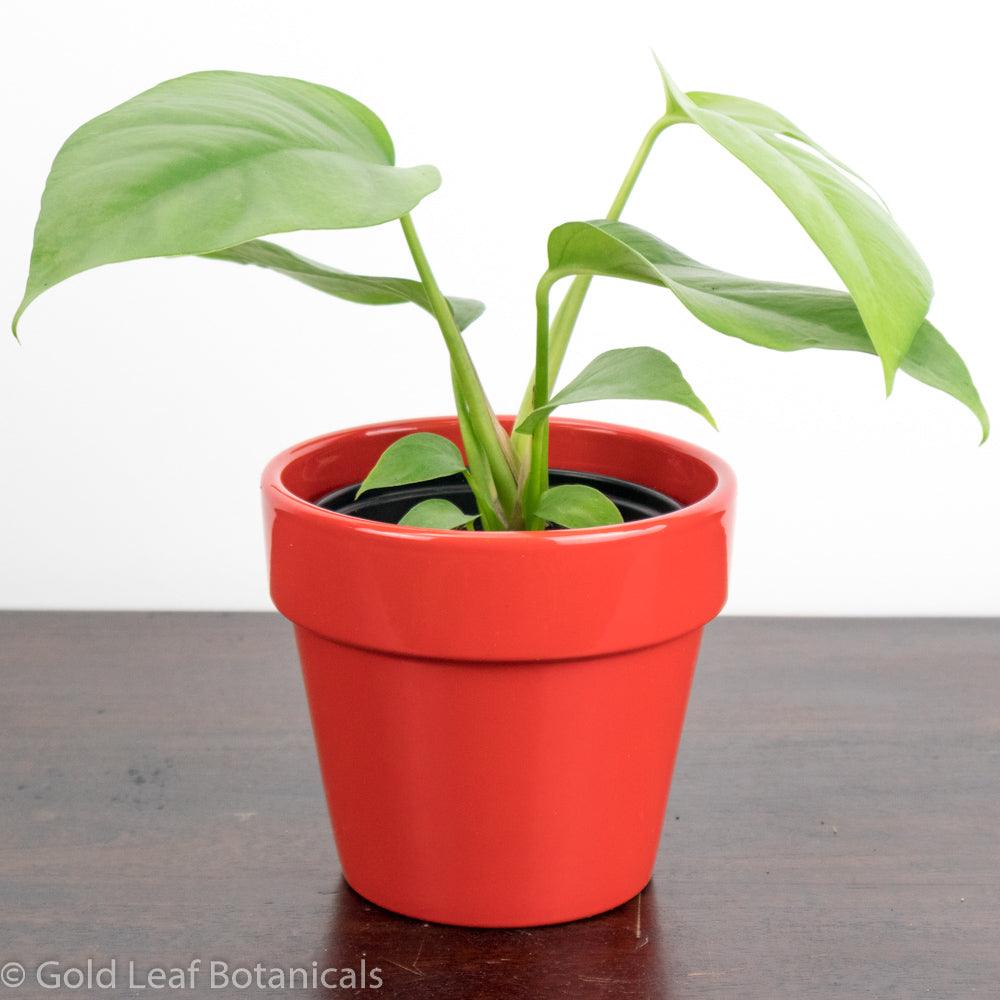


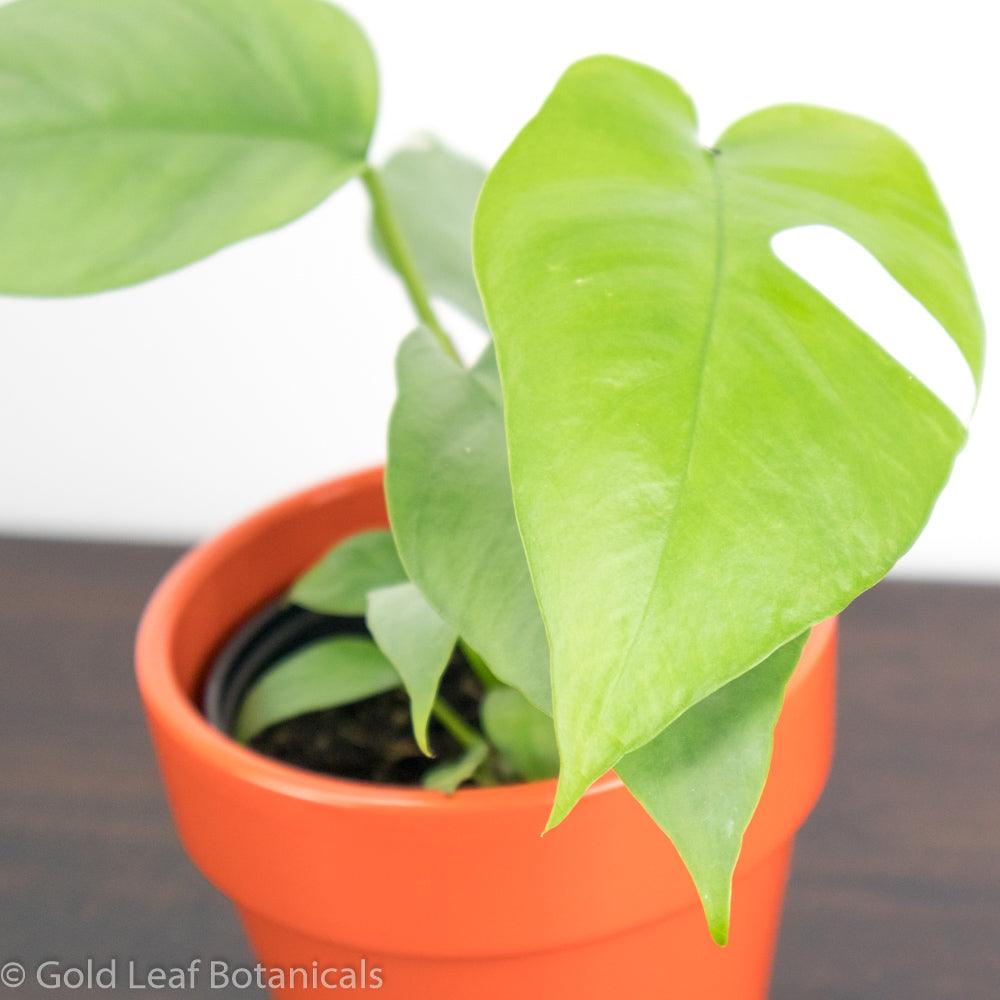
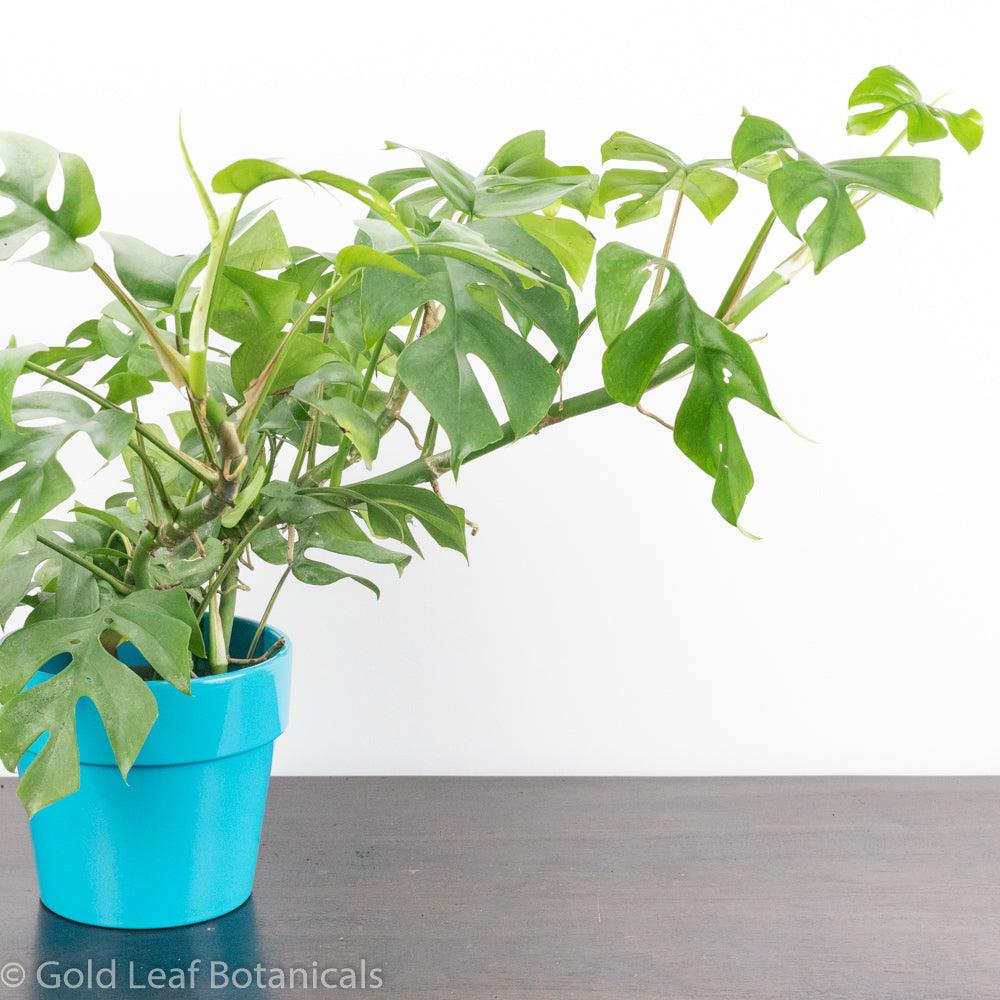
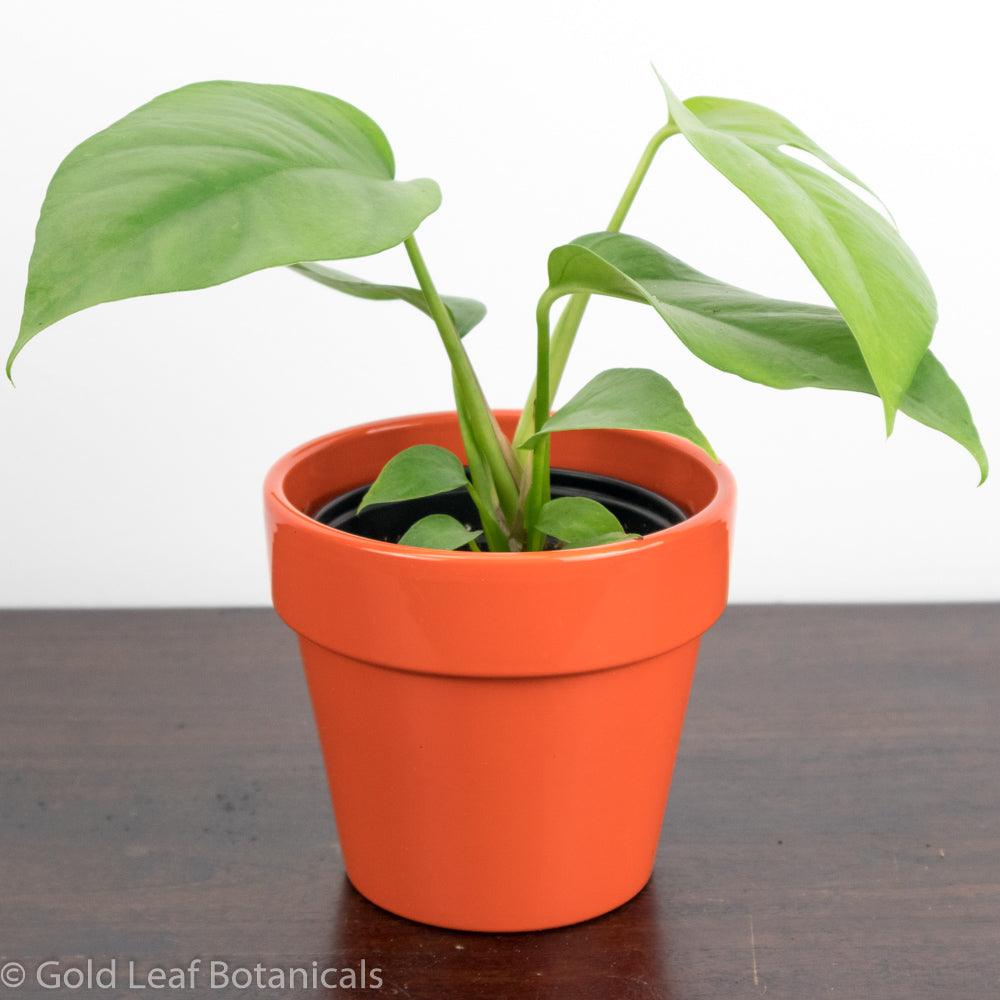

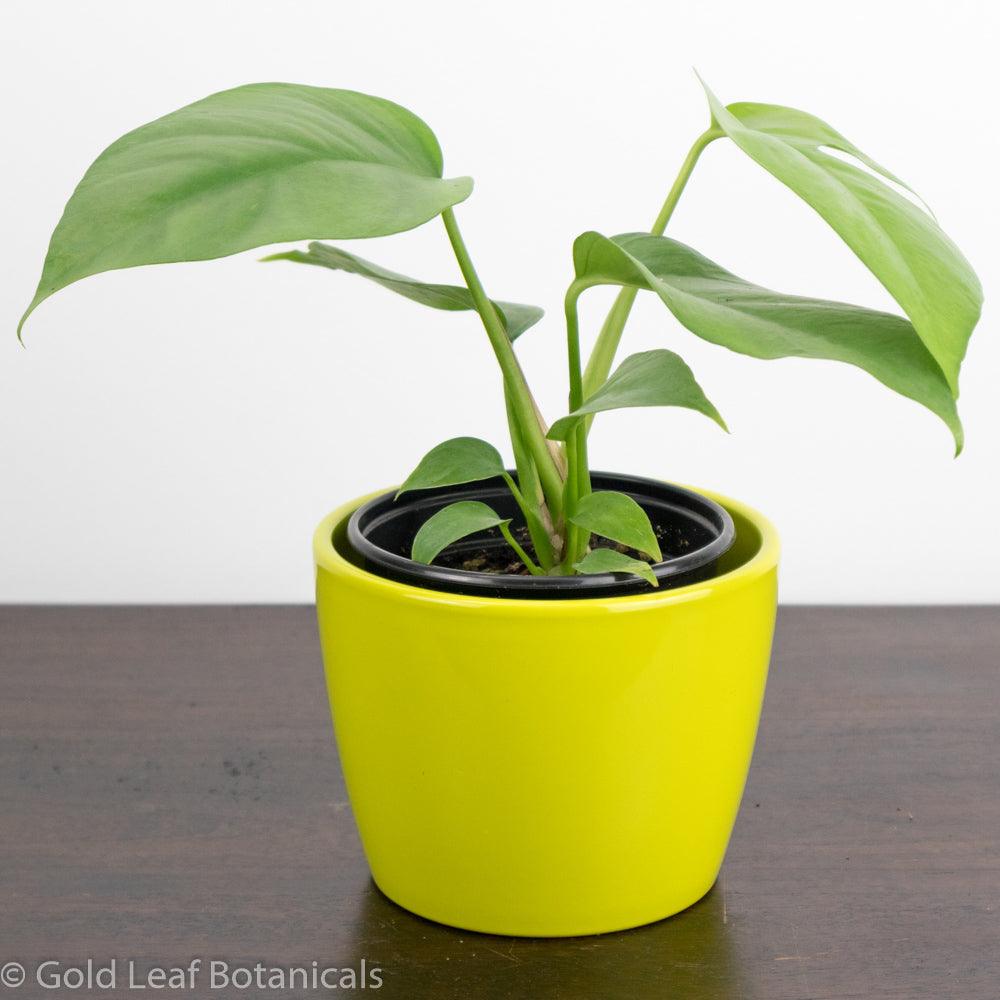
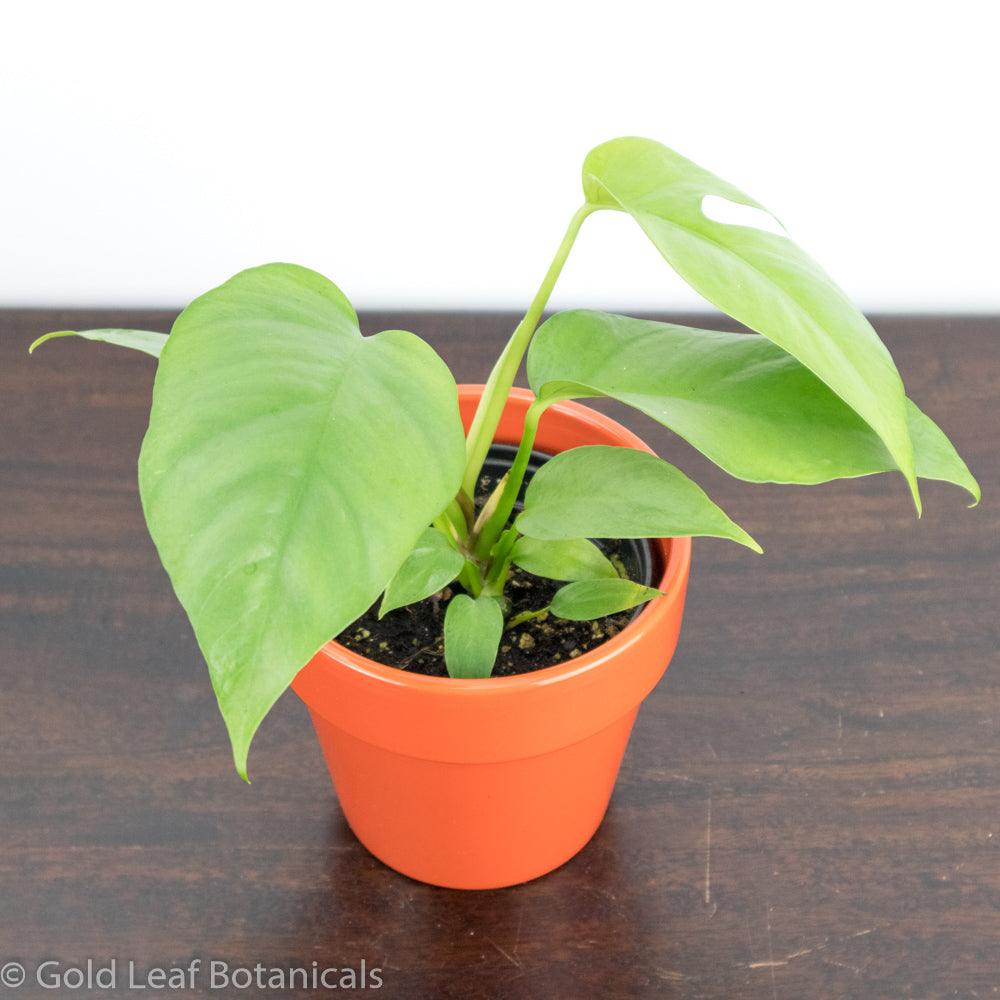
ENTER YOUR EMAIL TO SAVE 15% OFF YOUR FIRST ORDER
Be the first to know about new collections and exclusive offers.
Gold Leaf Gift Card
Share with friends!














